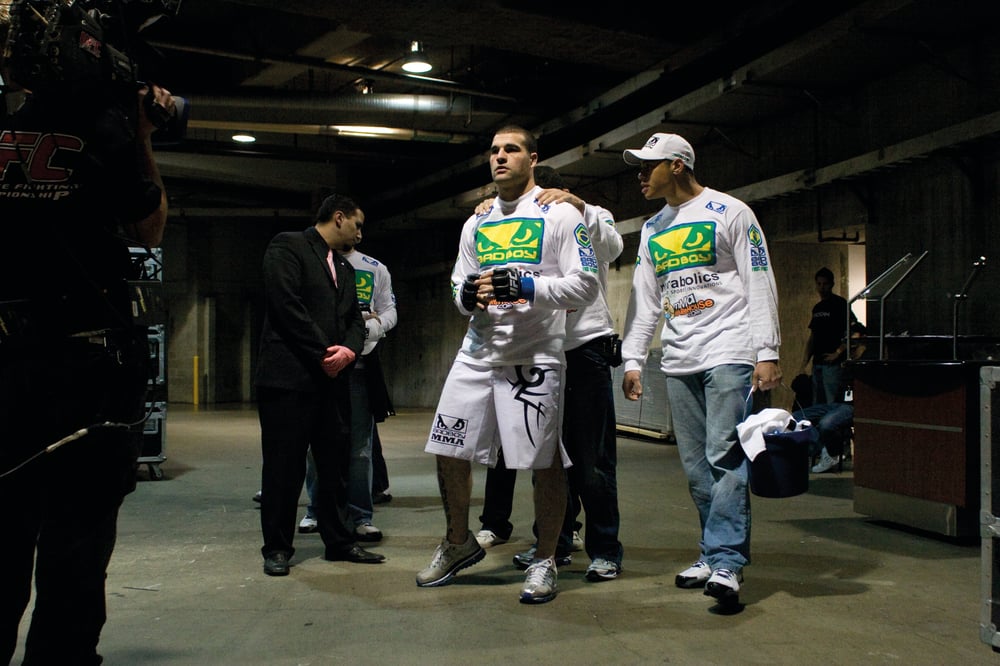
Issue 066
September 2010
If you are cornering a fighter for an MMA, boxing or Muay Thai fight there are certain things you will need in order to prepare and look after your fighter, both during and after the fight. With experience you will develop your own list but here we look at some of the basics to get you started
Enswell
This is a stamp-like piece of metal that can be used between rounds to help control the swelling on damaged areas of a fighter’s face. Correct use of an enswell can prevent the swelling around a fighter’s eye (which may obscure vision) and reduce bleeding from a difficult cut
Ice / ice bag
The ice is used to keep the enswell cold until it is needed. An ice bag can also be used to cool the fighter down, by placing it on the back of their neck, or to help reduce swelling on the arms or legs
Petroleum Jelly
You will usually be allowed to apply a little jelly to your fighter’s face above the eyes and on the nose and cheekbones to help prevent cuts. Be aware of the rules about where you do this – sometimes you are allowed to apply jelly in the changing room, and sometimes you will be directed to do it just before the fighter steps in the cage. You may not use jelly anywhere else on the body. Petroleum jelly may also be applied in between rounds to help control bleeding from cuts. Most other lotions and lubricants are banned, so choose your petroleum jelly wisely
Gloves
Good-quality protective gloves are important for your own safety and hygiene. They should fit you well so that you are able to work quickly and precisely if you need to deal with a cut. Most commonly made from latex, but also available in other materials in case you, or your fighter, are allergic

Water bottle
This can be either a purpose-made water bottle, sometimes with a spout that the fighter can drink from between rounds, or just a small bottle of mineral water with a sports cap. Either way, don’t forget it – it may also come in handy should you start to get hoarse when shouting instructions
Bucket
A proper corner bucket has two or more compartments to hold all the items of corner kit for easy access in the cage
Towel
To wipe your fighter down between rounds. Also necessary for before you start working on any cuts or bruising they may have. The referee may also direct you to clear blood or water that has been spilled on the canvas by your fighter
Cotton swabs
Swabs are used when working on a cut to control bleeding, or to help stop bleeding from a fighter’s nose
Scissors
Special bandage scissors are blunted on one side so they can be used to remove hand wraps without cutting your fighter
Gauze and tape for wrapping hands
This comes in various widths and qualities, and each cornerman or fighter may have their own preference. Two-inch gauze and one-inch tape is a common combination
GENERAL TIPS
Have clear roles
Make sure everyone in your corner team knows what their job is so that you don’t get in each other’s way, forget things or have too many people talking at once. Who will be first in the cage in between rounds? Who will give the fighter water? Who will deal with any cuts? Who will talk to the fighter and give advice or encouragement?
Practise and training
Good corner skills require practise. Hand wrapping and your routine of handling your fighter between rounds are things that you should run through until you can do them quickly and confidently.
Some corner skills may also require more specialist training. Proper cutwork is an art, and one that is obviously difficult to practise before fight night. If you have not been trained then keep your cutwork as simple as possible. It is better to get the basics right than try to be too ambitious and fail.
...









